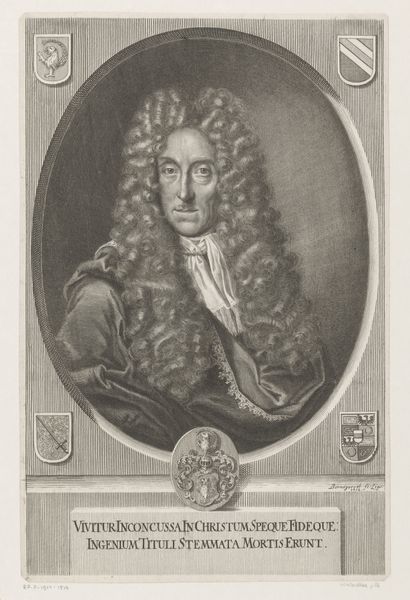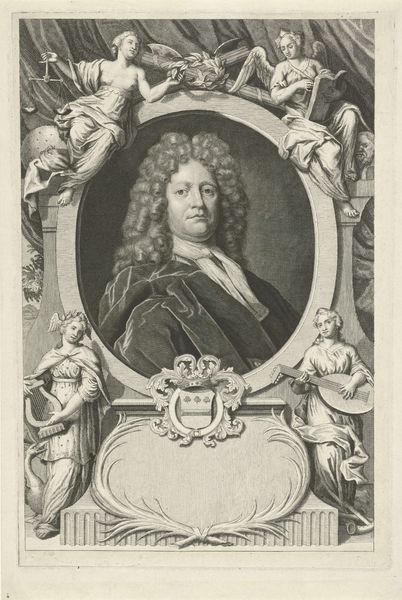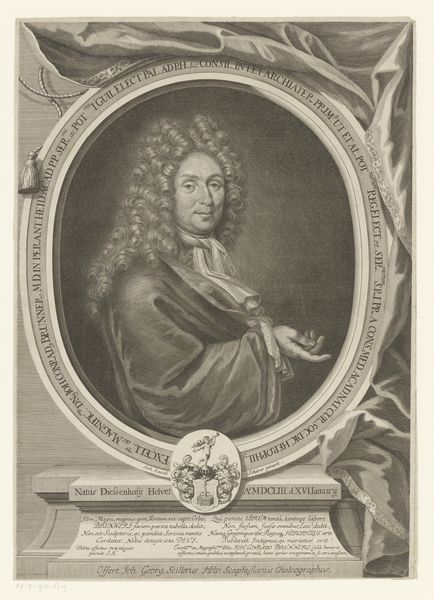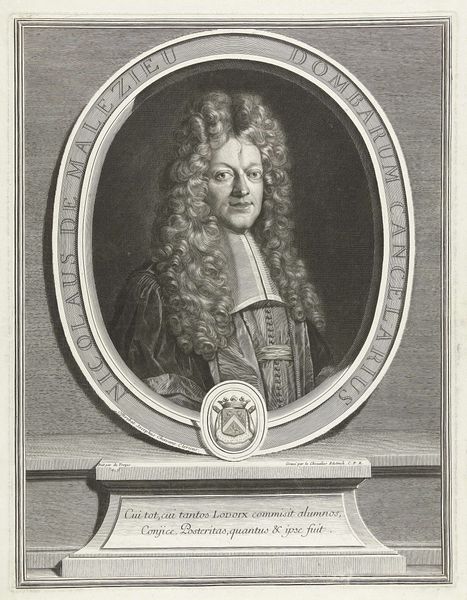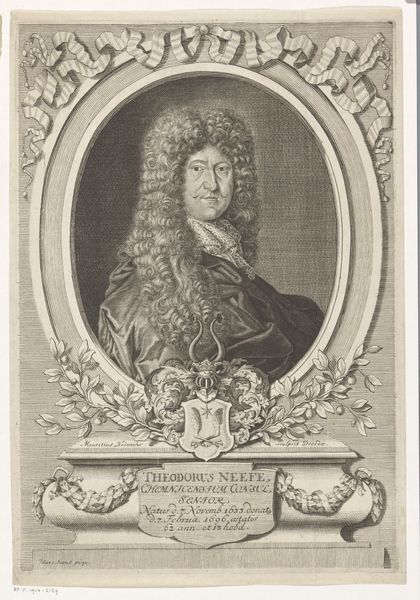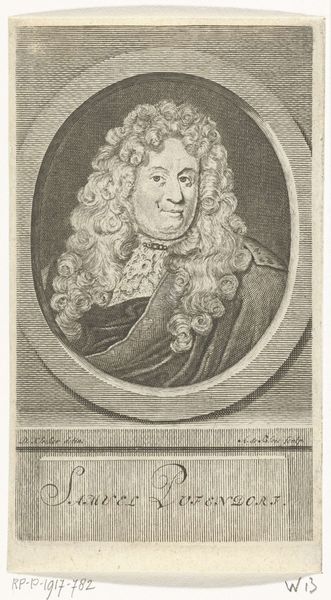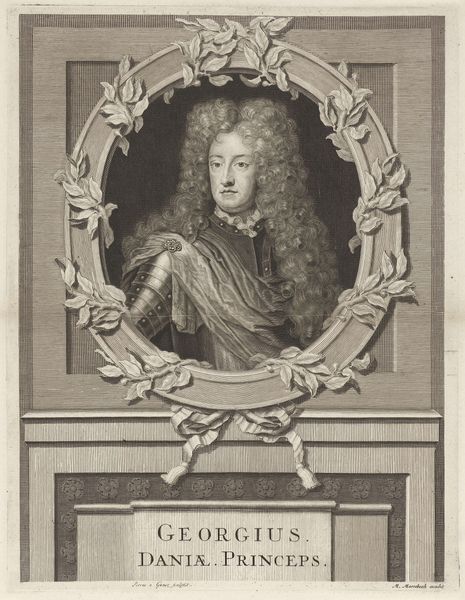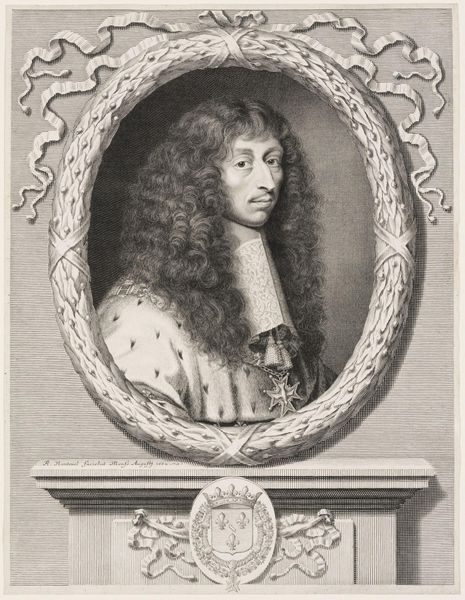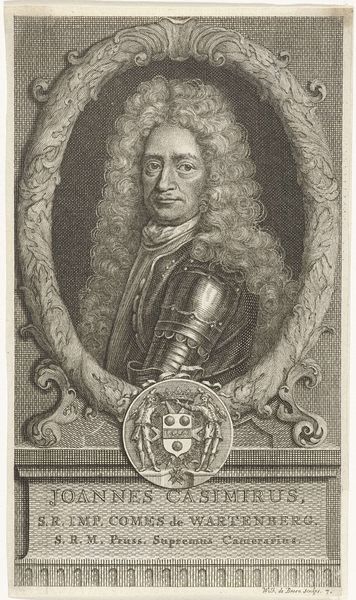
print, engraving
#
portrait
#
medieval
#
baroque
# print
#
old engraving style
#
figuration
#
history-painting
#
engraving
#
historical font
Dimensions: height 415 mm, width 336 mm
Copyright: Rijks Museum: Open Domain
Curator: Here we have Antonio Luciani's engraving, "Portret van procurator Aloysius Pisani," created sometime between 1710 and 1738. Editor: Immediately, I’m struck by the incredible detail and density of line work, especially in Pisani's wig. It feels opulent, bordering on overwhelming. Curator: The wig definitely signals power and status within that era. Notice also the rich textures achieved solely through line—look at the lace detailing on his robe, contrasted against the solid, almost severe, lines of the frame itself. It's all part of the visual language that would immediately convey wealth and position. Editor: Exactly! But the over-the-top nature also feels a bit... performative, doesn’t it? The pose, the frame, the Latin inscription above the image, which I read translates to, approximately, 'The Year of Redemption...' all this suggests that Pisani very intentionally curated his own image. It raises questions about who gets to be remembered, and how they choose to be remembered. Curator: True, the visual language surrounding figures of power often echoes archetypal images of strength and permanence. The engraving as a medium speaks to a desire for dissemination, for a portrait accessible to many, fixing a certain persona into the cultural memory. Even the presence of Latin anchors the subject to classical virtues and institutions. Editor: That said, these established codes are complicated! Looking closer, his face seems almost lost within that sea of hair. His own personality feels subordinate to these established symbols of authority, to the performance itself. I’m interested in the tension that arises. Curator: Indeed. In many ways, engravings like this were ancestors of contemporary modes of communicating wealth, power, and importance, setting patterns in a visual dialect that extends through time. Editor: An echo through the ages. For me, reflecting on this image opens further questioning of how carefully staged representations like these work both to empower, and in some senses obscure the very people represented. Curator: For me, considering this image reveals much about cultural and iconographic scripts within established orders and societies, inviting an exploration of how similar strategies have functioned across centuries.
Comments
No comments
Be the first to comment and join the conversation on the ultimate creative platform.
